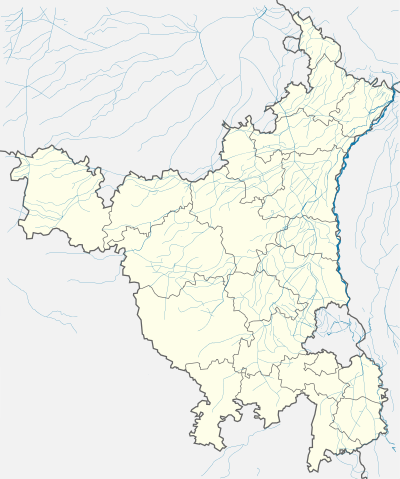Nangal Sirohi
| Nangal Sirohi नांगल सिरोही | |
|---|---|
| city | |
 Nangal Sirohi  Nangal Sirohi Location in Haryana, India | |
| Coordinates: 28°11′35″N 76°07′55″E / 28.193161°N 76.132078°ECoordinates: 28°11′35″N 76°07′55″E / 28.193161°N 76.132078°E | |
| Country |
|
| State | Haryana |
| District | Mahendragarh |
| Government | |
| • Sarpanch | Hwa singh Yadav |
| Area | |
| • Total | 10.4 km2 (4.0 sq mi) |
| Population (2001) | |
| • Total | 10,000 |
| • Density | 960/km2 (2,500/sq mi) |
| Languages | |
| • Official | Hindi |
| Time zone | IST (UTC+5:30) |
| PIN | 123028 |
| Telephone code | 01285 |
| Vehicle registration | HR-34 |
| Website |
haryana |
Nangal Sirohi is a town in Mahendragarh district in the Indian state of Haryana.
Geography
It is nine km from Mahendragarh towards Narnaul (16 km from Narnaul). This is in the south of Haryana, which is still full of wild shrubs, vast expanses of sand and dust storms as also hospitable and lovable people.
Distance
It is located at the longitude of 76.0804014 and latitude of 28.2066469. Nangal Sirohi is an India city located at the longitude of 76.120321 and latitude of 28.179575 .
History
The village estate of Nangal-Sirohi was founded and owned primarily by Yaduvanshi Ahirs of Khosya gotra whose ancestors came from the neighbouring Deroli village.
It is said about 400 years ago there was a person in Daroli village whose name was Dropaal. He exercised considerable influence over his clan. Sirohi was then owned by Gujjars who were notorious in the sense that they hardly ever paid revenue to the Mughal Nazim at Narnaul. Whenever the revenue officers descended upon them to collect revenue perforce, they fled into the nearby forests. When the trouble continued to persist, the Mughal authority at Delhi empowered Dropaal to occupy the estate vacated by the Gujjars on one such occasion.Pradeep Kumar from Dhikwar (Mandhan) Alwar (Rajasthan)
Population
The village is known for it Soldiers and Businessmen. Most of the Local families are known to have at least one person in Indian Armed forces and paramilitary forces. Nangal-Sirohi has been home to some of the very successful people, Founder of Major Indian Industrial house Modi Group of Industries was related to this place. Village is inhabited mostly by Ahirs (Yadav) whose principle occupation is to cultivate land and rear cattle. There are still about 500 families of Ahirs living in the village followed by 100 families of Baniyas, 80 families of Brahmins, 20 families of Kumhaars i.e., potters, 10 families of weavers, 10 families of barbers, 35 families of masons and carpenters, 2 families of Darzi(Chhipi) and, lastly, 10 families of Jogis.
Architecture
The older Part of the village called oopla baas (upper residence) is full of splendid havelis (mansions) believed to be built by local trading communities in 18th and 19th century. These were built by Chejaraas ( masons ) and Chiteyraas(painters) summoned from Shekhawati region of the erstwhile Jaipur State of Rajpootana, it was imperative that they left an impression of their native places by painting the images of Shekhawati Sirdaars and events from the native feudal life. In one of the haveli there are paintings depicting Shekhawati Sirdaars, while in the vault of the haveli other the expert painters have depicted scenes from the Ramayana and did some excellent work on the gods of the Hindu pantheon. In fact, the colour pigments in the wall paintings of the later haveli vault have been remarkably preserved for more than 90 years now and look fresh.
Though not many of them are in best of their condition as they are facing neglect due to migration of their owners to greener pastures. Few of them are aware of the artistic splendor on the walls and their academic significance. Although most of them recognize their cultural significance but none is aware about the necessity of their conservation or documentation by scholars. But due to lack of moisture and pollution in the region these were in fairly good shape and appears inviting to an observer.
References
http://www.tribuneindia.com/2002/20020622/windows/main2.htm
